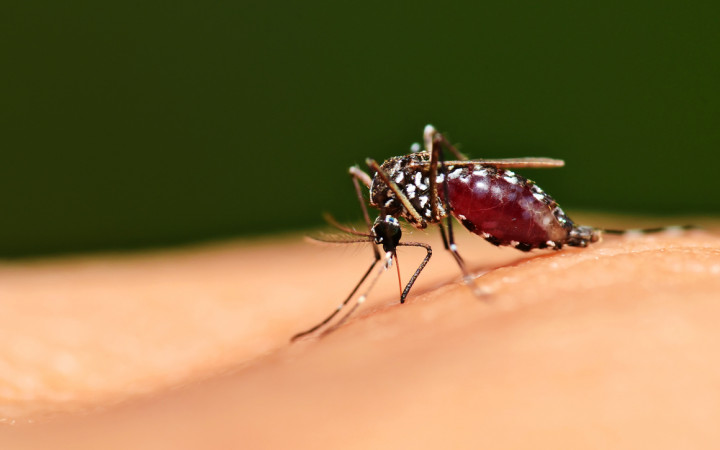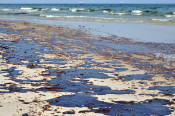Today’s Wonder of the Day was inspired by makayla. makayla Wonders, “How do Parasites take control over other animals?” Thanks for WONDERing with us, makayla!
Many Wonder Friends probably know there might be bugs on their bodies right now. But have you heard there could be tiny creatures living INSIDE of you, too? What are we talking about? Parasites!
Parasites are small organisms that get their food and shelter from others. Sometimes that other organism might be YOU. If so, the parasite calls you its host. Does that make your skin crawl? If it does, that’s okay! Most people don’t like the thought of being a host for harmful creatures.
How can you get parasites? Many are passed through food or water. Some also travel through dirt or waste. They can even pass through person-to-person contact. Most parasites are tiny. Many are single-celled organisms that are invisible to the naked eye. Others are multi-celled organisms that can be seen without a microscope.
Parasites rely on their hosts for food and shelter. Unfortunately, they also cause their hosts harm. For example, some common parasites are viruses. Viruses, like all parasites, rely on their hosts to live, grow, and reproduce.
In the process, they also often make their hosts sick. Fortunately, it’s rare for parasites to kill their hosts. They can, however, cause diseases and malnutrition.
Children often pass parasites easily to other children. Whether they’re in school or daycare, children seem to have a knack for sharing things. That includes cold germs and parasites.
What are some common parasites for kids to watch out for? According to the Centers for Disease Control and Prevention (CDC), children often get giardia, pinworms, and head lice. Luckily, most parasites can be easily treated with modern medicines. Doctors can help stop parasites in their tracks before they’re passed along to others.
Giardia is a tiny organism often found in unclean water. When it enters a human or animal, it lives in the intestines. Giardia can cause painful stomach cramping. This can last up to six weeks.
Pinworms are just what they sound like: tiny, thin, white worms. They can grow to be up to a quarter-inch long. They are often passed through dirt or waste. As many as a third of all children around the world may have pinworms at some point. Although they can cause many illnesses, pinworms are killed easily with medicine.
Head lice are perhaps the parasite children are most familiar with. These tiny insects live in the hair and feed on blood taken from the scalp. Lice spread easily between children. That’s largely because the insects have claws that help them crawl. They can cling firmly to hair, clothing, and combs. Lice can cause many problems. Luckily, special shampoos help get rid of them.
Giardia, pinworms, and head lice are not the only parasites that affect humans. There are many more, including roundworms and tapeworms. How can you avoid parasites? Take care of yourself, stay clean, and wash your hands! With everyone doing their part, people can help slow the spread of these tiny creatures.
Standards: NGSS.LS1.A, NGSS.LS1.C, NGSS.LS4.C, NGSS.LS4.D, CCRA.L.3, CCRA.L.6, CCRA.R.1, CCRA.R.2, CCRA.R.4, CCRA.R.10, CCRA.SL.1, CCRA.W.7











$torm
Juliette
januyah
?
star
laura
kaely
malia
kaely perez
izzy
Hannah
Riley
katelyn
Asher
Oliver
Iris
Jaden
caser
Kaitlyn
??too much makeup?
6843d
Aubrey
Aubrey Blocker
komododragons
LALALALALA
komododragons
Alex
Wonderopolis
keaton
Wonderopolis
Gracie
Wonderopolis
Atira
Wonderopolis
Adrien
Wonderopolis
Chrissy
Wonderopolis
john
Wonderopolis
boomcat
patrick r
Wonderopolis
kaitlyn
Wonderopolis
kaitlyn k
Wonderopolis
Ryan
Wonderopolis
seddy
Wonderopolis
Angel
Aubrey Elizabeth Blocker
Wonderopolis
eric
Wonderopolis
eric
Wonderopolis
eric
Wonderopolis
Ava and Nick
Wonderopolis
Grace
Wonderopolis
Narwhal
Wonderopolis
Anna
Wonderopolis
mookie the cat MC
Wonderopolis
Siddman MC
Wonderopolis
matt d
Wonderopolis
Sarra S
Wonderopolis
jules
Wonderopolis
Carlos a.
Wonderopolis
Joseph
Wonderopolis
alexis
Wonderopolis